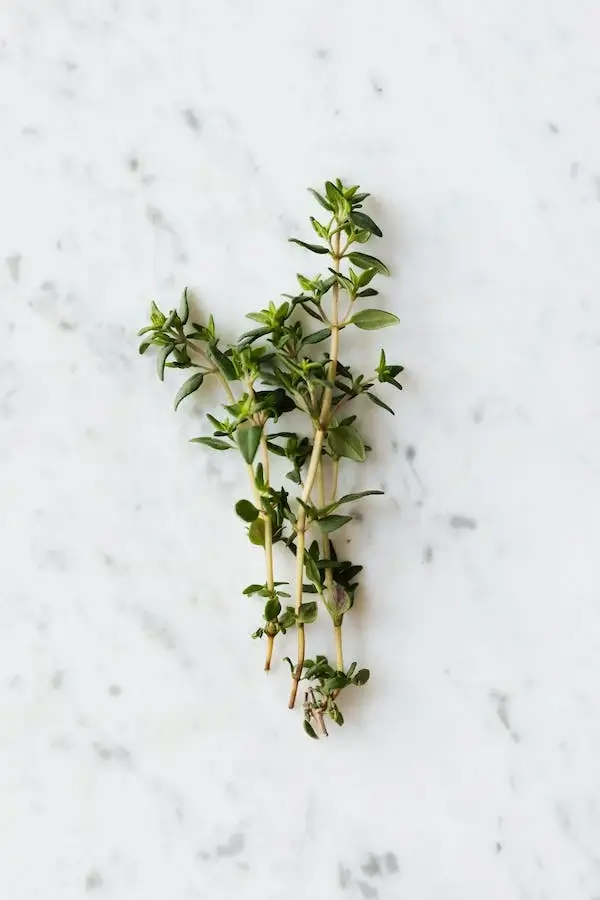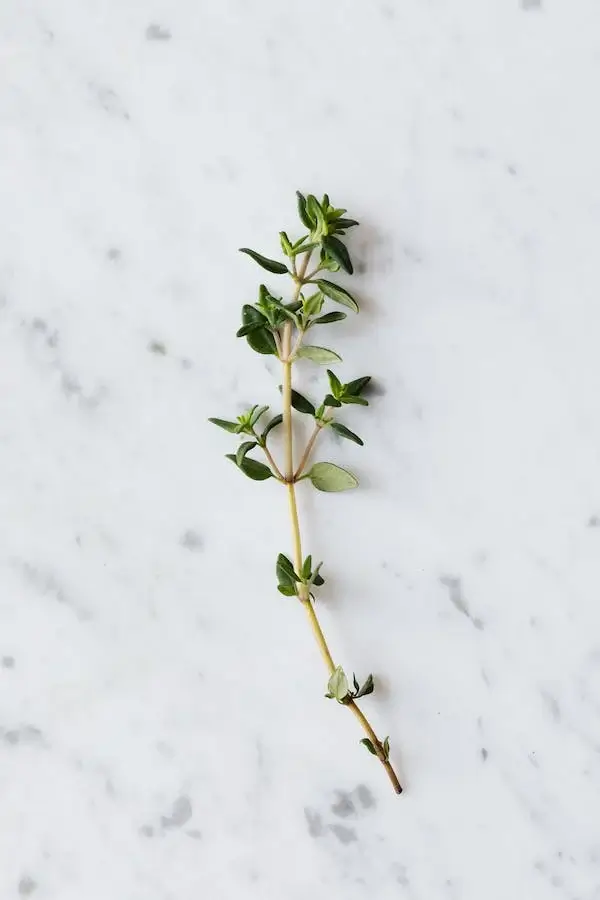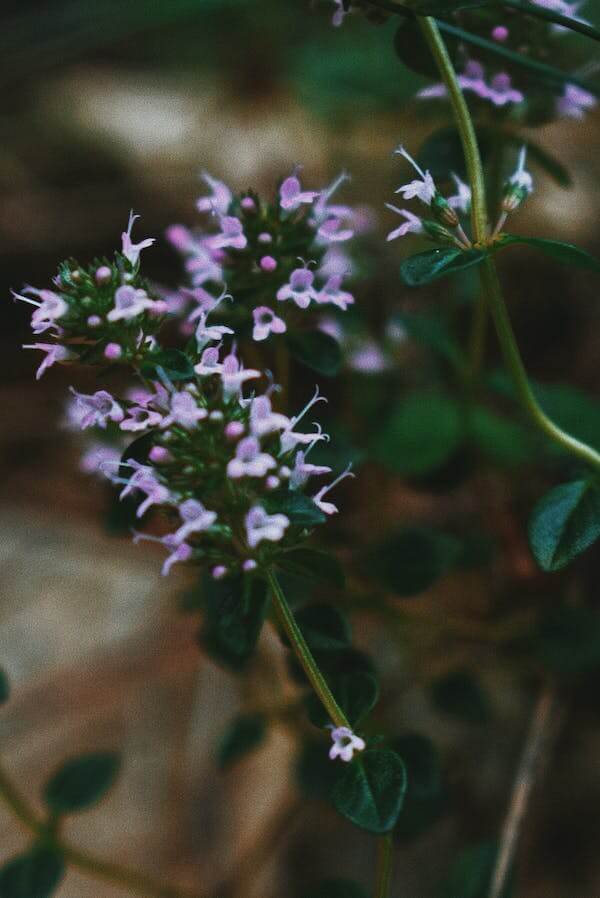In ideal gardening, differentiating between two herbs belonging to the same family is crucial. This prime step avoids confusion in terms of growth requirements and end-product usage. Two such herbs are the elfin thyme and creeping thyme. The plants belong to the same family and share several anatomical similarities inherent to the thyme species. They feature small, elliptical leaves and tiny tubular flowers and contain essential oils that release a pleasant fragrance when crushed.
Elfin and creeping thyme differ in flavor, aroma, size, and appearance. Elfin thyme is smaller and has compact growth while creeping thyme sprawls in development. So, if you want to fill large spaces with a low carpet-like cover, go for the creeping thyme and vice versa. To understand these distinctions, we have this guide for you to walk through before you begin your gardening milestones. So, let’s explore the differences between these two thyme varieties:
Comparison Chart: Elfin Thyme Vs. Creeping Thyme
| Key Features | Elfin Thyme | Creeping Thyme |
| Leaf size | Small | Large |
| Stem | Short | Long |
| Flowers | Small, tubular | Large, tubular |
| Height | Short | Tall |
| Adaptability to shade | Tolerates shade | Does well in sunlight |
| Landscaping | Yes | No |
| Aroma | Yes | Yes |
| Drought tolerance | Yes | Yes |
1. Leaf Size And Shape

- Elfin Thyme: This miniature thyme variety has small, elliptical leaves that are densely packed on short stems. The leaves are typically tiny, contributing to the compact and low-growing nature of the plant.
- Creeping Thyme: The leaves of creeping thyme are slightly larger and may vary in shape, often being more lance-shaped or ovate. The arrangement of leaves along the stems allows for a more sprawling and cascading growth habit.
2. Stem Structure

- Elfin Thyme: The stems of Elfin thyme are short, creating a tight and matted appearance. This growth habit is well-suited for ground cover, making it an excellent choice for filling small spaces and creating a uniform carpet-like effect.
- Creeping Thyme: The stems of creeping thyme are more extended, allowing the plant to spread and cascade over surfaces. This growth pattern makes it suitable for larger areas where the thyme can drape over edges or spill down slopes.
3. Flowering Structure

- Elfin Thyme: When Elfin thyme blooms, it produces small, tubular flowers that are typically pink to lavender. The flowers’ diminutive size complements the plant’s overall compact nature.
- Creeping Thyme: Creeping thyme also produces tubular flowers, but they can be slightly larger and come in various colors, including pink, magenta, and white. The taller stems make the flowers more visible and create a charming display.
4. Growth Height
- Elfin Thyme: This variety stays very low to the ground, often not exceeding an inch in height. Its diminutive size makes it an ideal choice for areas where a tight, low-growing ground cover is desired.
- Creeping Thyme: With a more extensive growth habit, creeping thyme can reach several inches in height. This additional height allows it to cover larger areas and adds versatility to landscaping designs.
5. Adaptability to Shade
- Elfin Thyme: While both thyme varieties prefer full sun, Elfin thyme tolerates partial shade more effectively than creeping thyme. This adaptability makes it a suitable option for areas in the garden with varying light conditions. For instance, you can built pallets and plant the Elfin indoors or at the balcony.
- Creeping Thyme: Creeping thyme thrives in full sun and may not perform well in areas with limited sunlight. It is best suited for sunny locations with ample sunlight for optimal growth.
5. Use In Landscaping

- Elfin Thyme: Due to its compact size, Elfin thyme is often used in spaces where a low, carpet-like cover is desired. It’s perfect for filling gaps between stepping stones or a border plant in your rock gardens.
- Creeping thyme: With its slightly more extensive growth, it is suitable for larger areas with a more extensive ground cover. It works well as a cascading plant on slopes or draping over retaining walls.
Similarities Between Elfin Thyme And Creeping Thyme
Below are some of the similarities between the creeping and elfin thyme.
Leaf Structure:
These thymes share a similar leaf structure characterized by small, elliptical leaves. These leaves agave a dense arrangement along the stems, contributing to both varieties’ lush and vibrant appearance.
Aromatic Foliage
The thyme’s aroma is a shared feature between the two. When you crush the leaves of either variety, they release essential oils that produce a pleasant fragrance. This aromatic foliage is a common trait in thyme plants.
Flower Anatomy
Both varieties produce small, tubular flowers that add a decorative element to the plants. Elfin thyme’s and creeping thyme’s flowers differ in color but share a similar structure. They attract pollinators like bees and butterflies.
Stem Characteristics
The stems of both Elfin and creeping thyme contribute to their respective growth habits. While Elfin has shorter branches that create a compact mat, advancing features longer stems that allow it to spread and cascade. Despite the variation in length, the basic structure of the stems is similar in both varieties.
Genetic Similarities
Elfin and creeping thyme belong to the same Thymus genus. This shared genetic background results in similar anatomical features, including the leaf shape, fragrance, flowering, and overall growth patterns.
Low Maintenance Plants
Both Elfin and creeping thyme are known for their low-maintenance nature. These hardy plants require minimal care, making them ideal for busy gardeners or those looking for fuss-free ground cover.
Drought Tolerance
Thyme, in general, is renowned for its drought tolerance. Elfin and creeping thymes are no exception. Once established, these plants can withstand periods of drought, making them suitable for regions with dry climates or where water conservation is a concern.
Aromatic Foliage
One of the defining features of thyme is its aromatic foliage. Elfin and creeping thymes release a pleasant fragrance when their leaves are crushed, adding a sensory element to your garden. This aromatic quality is pleasing to humans and can have repellent effects on specific pests. So, you can plant plants to keep away aphids, mites, mosquitoes, and other harmful insects from your home.
Conclusion
There are significant similarities and differences between creeping and Elfin thyme. The primary ones revolve around leaf size, stem structure, flowering characteristics, growth height, and adaptability to shade. Some include the adaptation to the environment. Understanding these distinctions and similarities can help you choose the suitable thyme variety based on your landscaping and herbs preferences and environmental conditions.

